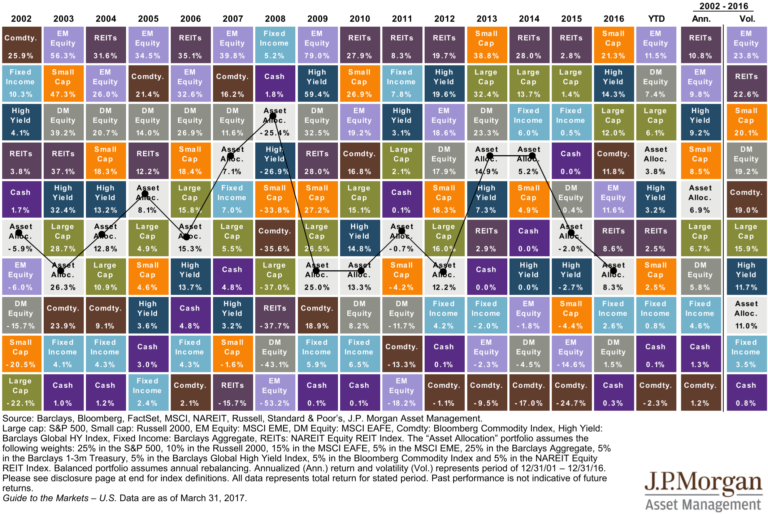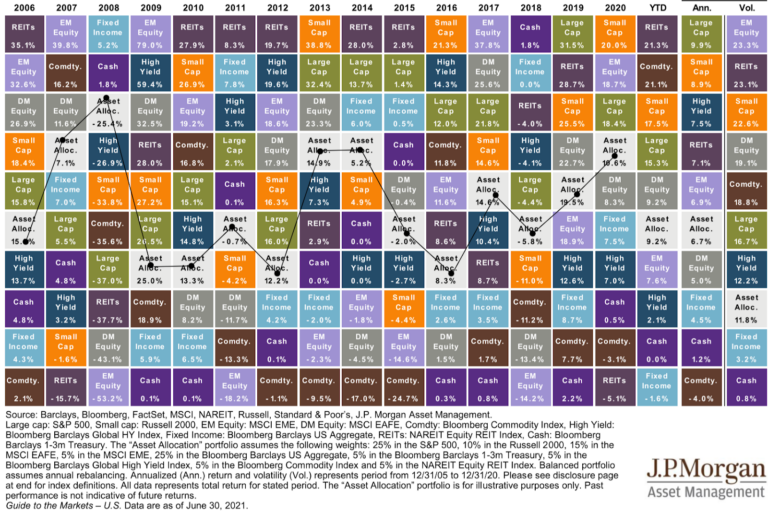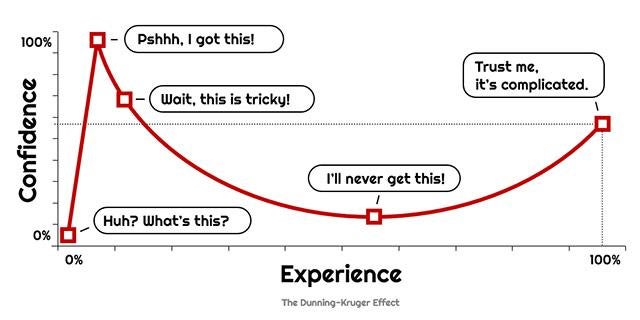Quarter in Charts – Q1 2025
This most recent quarter and the Tariff announcements immediately afterward (which we detailed in our Tariffs and a Declaration of Parental Independence blog post here) reminded investors that markets don’t move in straight lines.
After a strong end to 2024, stocks stumbled out of the gate this year. The S&P 500 declined -4.3% as interest rate fears, geopolitics, and trade tensions weighed on investors. But the story wasn’t all negative. Bond markets rallied, international stocks outperformed, and commodities quietly stabilized.
In fact, Q1 2025 returns across asset classes were similar to the inverse of Q4 2024, highlighting the benefits of diversification.

U.S. Equities: A Mega-Cap Reset
The “Magnificent 7” mega-cap names that led markets in 2023 and 2024 entered bear market territory as a group in this first quarter. In fact, the S&P 500 without the Magnificent 7 would have been slightly positive rather than down close to 5% for the quarter (see below left, the grey line “S&P 500” versus the blue line “S&P 500 ex Mag 7”). As a result, this reset dragged the broader index lower, particularly in technology, communication services, and consumer discretionary. Yet not all sectors fell equally; defensive areas like utilities, health care, and staples held up better.

Foreign Equities: The Case for Global Diversification
While U.S. stocks pulled back, international markets improved. Developed markets rose 7.0% (MSCI EAFE), helped by a weaker dollar and firming economic data from Europe and Japan. Emerging markets gained 3.0%, with some support from commodity-producing economies. Even with this small uptick, foreign equities are still historically undervalued (see the chart below).

If nothing else, Q1 was a reminder that the U.S. won’t always win and global exposure matters. Since 1974, US and Foreign equities have engaged in an outperformance tug-of-war (see the chart below detailing 5-year rolling outperformance) with the US in the lead since coming out of the great recession of 2009. While we don’t know if this whipsaw relationship will continue, this first quarter highlights that potential.

Bonds: A Respite from Rising Rates
After a brutal stretch, bonds bounced back this quarter. The Bloomberg U.S. Aggregate Bond Index returned +2.8%, and Treasury Inflation-Protected Securities (TIPS) rose +4.2%. With inflation cooling and the Fed holding steady, investors grew more confident that rate cuts are coming eventually. We continue to believe bonds can serve as ballast in portfolios, especially as rate paths and equity markets remain uncertain, as seen in the chart below during significant recessions.

Volatility Loves Company
Uncertainty around the Fed, tariffs, and geopolitics led to sharper swings in Q1. I love this chart from Sherwood News as it shows how big up and down days tend to happen near each other. Of course, this chart was as of 4/3 and didn’t even include the next down day (-6%) or a few days later when it rebounded (+9.5%). The lesson is that volatility often clusters; what’s calm today can turn quickly. That’s not a cause for panic, but a reminder to prepare, not predict.

Perspective Matters
Equity markets go through tough stretches. But history tells us bear markets tend to be shorter and less powerful than the bull markets that follow. Even with frequent declines, long-term investors have been rewarded for staying invested, not guessing when to get out.

When we don’t have the “time” to be long-term (or at least not with all of our dollars), bonds tend to serve as a buoy. Whatever the investment markets bring us, knowing our financial plan and the factors that impact it goes a long way toward identifying the right asset mix and withstanding the volatility. The chart below shows a range of stock and bond mixes over the last 98 years. There is no guarantee that the next year or decade will look like the last century, but a flexible and intentional financial plan and asset allocation brings significant clarity to the picture.









